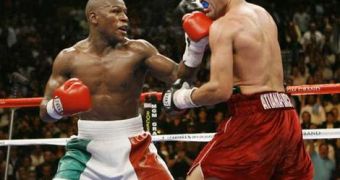Want to win a contest against an equally skilled opponent? Wear red clothing! That should give you a satisfactory advantage. During a study destined to establish how humans perceive the color red in certain situations, Norbert Hagemann of the University of Munster discovered that referees are more likely to unwillingly advantage contestants wearing red colored clothing, suggesting that there is an association in the human brain between the color red and dominance and aggression.
This association was originally brought up by Russell Hill and Robert Barton of the University of Durham during 2005, after discovering a possible link between the performance of an athlete and the colors of the clothing. Nowm Hagemann showed that in fact it's the colors that have an impact on the decisions made by the referees not the performance of athletes.
After making a martial art tae kwon do video in which the opponents wore blue respectively red protective gear, Hagemann created an experiment in which 42 referees judged the best athlete, one at a time. They then watched the same match again, although the colors of the protective gear had been digitally reversed. The results showed that the athlete wearing red was most likely to receive 13 percent more points than his opponent, although the referees basically watched the same bout.
"This is a neat experiment. It reinforces the fact that color influences the outcome of sporting contests," says Barton. The altered perception is probably due to processes taking place in the subconscious of the referees, meaning that their judgment is also partially impaired.
Sports such as boxing or wrestling traditionally use blue and red for the clothing used by the competitors. The same is true for tae kwon do, although in the last couple of years electronic devices were often used to help referees in judging the match.
"But such devices are not used in boxing and still do not alter any psychological benefit granted to athletes merely wearing red. In team games the effect should be small compared to a combat sport where the outcome is mainly based on several judgments. In team sports there could be a bias only in ambiguous tackling situations and these are usually rare," said Hagemann.

 14 DAY TRIAL //
14 DAY TRIAL //